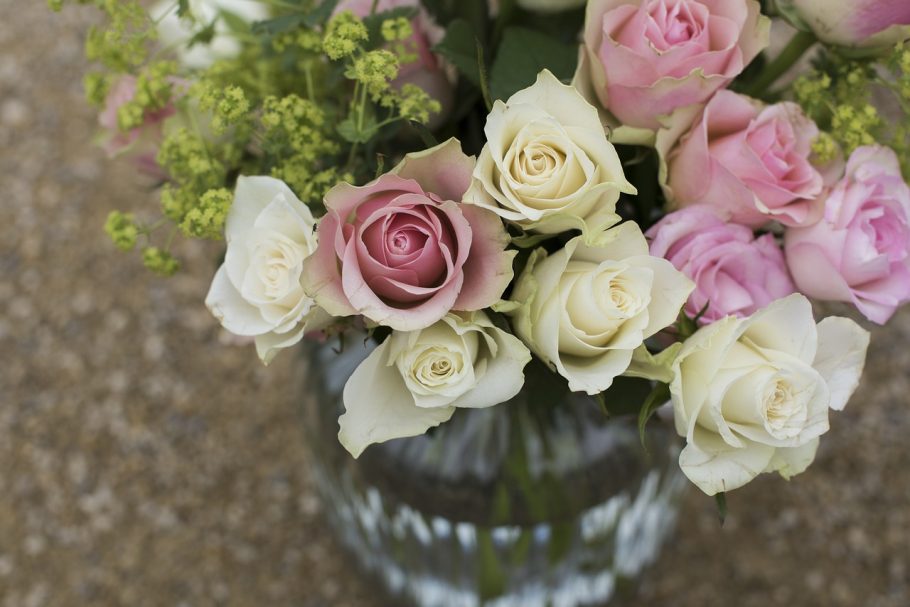Flower arrangements have been a part of human culture for centuries and can be considered a form of art. Flowers have their own language, and the way they are arranged can convey different meanings. Understanding the symbolism and meanings behind different flowers and their arrangement can help you choose the perfect arrangement for any occasion.
There is a long history and cultural significance behind flower arrangements, with the earliest known recorded instances dating back to ancient Egypt. With each culture developing and adapting their own unique styles and methods, flower arrangements have evolved into a diverse and intricate art form.
By learning about the language of flowers, you can understand the hidden meanings behind different flowers and colors. Roses, for example, are often associated with love and passion while daisies are associated with innocence and purity. Different colors can also hold their own meanings, with red representing love, while yellow represents friendship and joy.
If you’re interested in creating your own flower arrangement, understanding the basics of design and color theory is essential. With the right tools and techniques, anyone can create a beautiful and unique flower arrangement. Additionally, knowing which style of flower arrangement is appropriate for specific occasions, such as weddings or funerals, can help you choose the perfect arrangement.
Last but not least, it’s important to know how to care for your flower arrangements to keep them looking fresh and vibrant. Proper watering, pruning, and maintenance can ensure that your flowers stay beautiful for as long as possible.
Overall, understanding the history, language, and care of flowers can add depth and symbolism to any occasion, whether you’re creating your own arrangement or choosing one from a florist.
The History of Flower Arrangements
Flower arrangements have been an important part of many cultures around the world for centuries. In ancient Egypt, elaborately arranged flowers were often used for religious ceremonies and funerals. In Japan, the art of flower arrangement, known as ikebana, has been practiced for over 600 years. Other cultures, such as the Greeks and Romans, also had their own unique styles and techniques.
The practice of flower arrangement has evolved over time, utilizing different materials and designs to create stunning displays. In the 17th century, the Dutch introduced the use of vases and containers to hold flowers, while in the Victorian era, flowers were often arranged in large, ornate displays as a way of displaying wealth and status.
Today, flower arrangement remains a popular art form, with a wide variety of styles and techniques used by florists and hobbyists alike. From traditional European designs to more modern, minimalist arrangements, there is a style to suit every taste.
The Language of Flowers
The language of flowers, also known as floriography, is a system of symbols and meanings associated with different types and colors of flowers. The concept originated in Persia in the 16th century and was popularized in Europe during the Victorian era. In the language of flowers, different flowers and their arrangements can convey a range of emotions and sentiments. For example, red roses symbolize love and passion, while white lilies represent purity and innocence.
Understanding the language of flowers can help you choose the perfect arrangement for any occasion, whether it’s a romantic gesture or a sympathy bouquet. By incorporating specific flowers and colors into your arrangements, you can convey a deeper message and add symbolism to your gift.
- Red flowers: love, passion, desire
- Pink flowers: admiration, gratitude, joy
- Yellow flowers: friendship, happiness, new beginnings
- White flowers: purity, innocence, sympathy
- Orange flowers: enthusiasm, excitement, warmth
- Purple flowers: royalty, luxury, admiration
It’s important to note that the meanings of flowers can vary depending on culture and context, so it’s always helpful to do some research and consider the recipient’s personal preferences. When creating a flower arrangement, consider the symbolism behind each flower and color combination and choose the ones that best convey your intended message.
Popular Flower Meanings
Flowers are not only beautiful but also convey different meanings depending on the type of flower. Understanding the meanings behind popular flowers can help you choose the perfect arrangement to express your feelings. For example, roses are commonly associated with love and passion, making them a popular choice for Valentine’s Day or weddings. On the other hand, daisies represent innocence and purity, making them an ideal choice for baby showers or as a sympathy gift. Carnations symbolize admiration and gratitude, while lilies are often associated with purity and spirituality, making them a popular choice for funerals. It’s important to keep in mind the meanings behind popular flowers when choosing an arrangement for a specific occasion.
- Roses: love, passion
- Daisies: innocence, purity
- Carnations: admiration, gratitude
- Lilies: purity, spirituality
By understanding the meanings behind popular flowers, you can create a beautiful and meaningful arrangement that will convey your emotions and add depth to any occasion.
The Power of Colors
The power of colors in flower arrangements goes beyond just their visual appeal. Different colors can have their own symbolic meanings, adding another layer of depth and significance to the arrangement. Red, for example, is often associated with love and passion, making it a popular choice for romantic occasions such as Valentine’s Day or weddings. Yellow, on the other hand, represents friendship and happiness, making it a great choice for a cheerful and uplifting arrangement.
Other colors also have their own meanings and can be used to convey different emotions or messages. Blue represents calmness and serenity, while pink is often associated with femininity and innocence. Purple symbolizes royalty and luxury, while green can represent growth and renewal.
It’s important to consider the meanings behind each color when creating a flower arrangement, as they can significantly impact the overall message and mood of the piece. By combining different colors and flower types, you can create a unique and personalized arrangement that perfectly conveys your intended message.
Creating Your Own Flower Arrangements
Creating your own flower arrangements can be a fun and rewarding experience. With the right tools and techniques, anyone can make a beautiful arrangement that is sure to impress. Before you start, it’s important to understand the basics of design and color theory.
- Design: When creating a flower arrangement, it’s important to consider the overall design. You can choose between several popular styles, such as the crescent, oval, or vertical arrangement. You should also think about the size and shape of the container you will be using, as well as the flowers and foliage that you want to include.
- Color theory: Understanding color theory can help you create an eye-catching and harmonious flower arrangement. You should choose colors that complement each other, such as shades of blue and green, or contrasting colors like yellow and purple. You should also consider the mood you want to convey, such as romance, cheerfulness, or tranquility.
Once you have a basic understanding of design and color theory, it’s time to start creating your arrangement. Begin by selecting your flowers and foliage, taking into account their size and texture. You can then start arranging them in your chosen style, making sure to balance the colors and textures throughout the arrangement. Don’t be afraid to experiment and try new things – with a bit of practice, you’ll be able to create stunning flower arrangements that are sure to impress.
Flower Arrangements for Different Occasions
Flower arrangements play an important part in different occasions and events. Understanding the appropriate style and symbolism can help you create the perfect arrangement for the occasion. Weddings, for example, generally call for romantic and elegant flower arrangements. Roses, lilies, and peonies are popular choices for wedding arrangements, symbolizing love, purity, and prosperity.
Funerals, on the other hand, usually require more solemn and muted flower arrangements. White lilies, chrysanthemums, and carnations are commonly used in funeral flower arrangements, symbolizing peace, reverence, and remembrance.
Corporate events may require more modern and sophisticated flower arrangements. Orchids and calla lilies are popular choices for corporate events, symbolizing elegance, refinement, and success.
It’s also important to consider the color scheme of the event when creating flower arrangements. Bold and bright colors may be appropriate for a birthday party, while soft and romantic colors may be more fitting for a baby shower or a wedding anniversary celebration.
Overall, understanding the appropriate style and symbolism of flower arrangements for different occasions can help you choose the perfect arrangement for your event. With careful consideration of the occasion and the color scheme, you can create a beautiful and meaningful arrangement that adds to the overall ambiance of the event.
Caring for Your Flower Arrangements
When it comes to flower arrangements, proper care is essential to ensure they stay fresh and beautiful for as long as possible. Watering is one of the most important aspects of caring for your flowers. You should check the water level daily and change it every two or three days. It’s important to use tepid water, as this will help your flowers to absorb more nutrients.
Pruning is another important aspect of caring for your flowers. This involves removing any dead or dying blooms, as well as trimming the stems to keep them at the right length. This will help to prevent your flowers from wilting and drooping, and will also encourage new growth.
Finally, maintaining your flowers involves keeping them away from direct sunlight and heat sources, as well as protecting them from drafts and cold temperatures. You should also avoid placing them near fruit, as this can release gases that can cause your flowers to wilt.
By taking the time to understand these basics of flower care, you can ensure that your flower arrangements stay fresh and beautiful for as long as possible. With the right care and attention, your flowers will continue to brighten up any room or occasion.
Conclusion
Flower arranging is a form of art that can add depth and symbolism to any occasion. By understanding the meanings behind different flowers and their arrangements, you can create a memorable and meaningful experience. The history of flower arrangements dates back centuries, and different cultures around the world have developed unique styles and techniques. Understanding the language of flowers is also important. Each flower has a unique meaning, and the way they are arranged can convey different messages.
In addition to understanding the language of flowers, knowing the power of colors can also be helpful. Different colors can have different meanings and can add depth to any arrangement. With the right tools and techniques, anyone can create a beautiful flower arrangement. Understanding the basics of design and color theory can help you create a stunning centerpiece or bouquet.
It’s important to consider the occasion when creating a flower arrangement. Different occasions call for different types of flower arrangements, such as weddings, funerals, or birthdays. By understanding the appropriate style and symbolism, you can choose the perfect arrangement for any occasion.
Proper care and maintenance is also crucial for keeping your flower arrangements looking fresh and beautiful. Understanding the basics of watering, pruning, and maintaining your flowers can help them last longer and maintain their beauty.
In conclusion, flower arranging is a beautiful and meaningful art form that can add depth and symbolism to any occasion. By understanding the history, language, and care of flowers, you can create a memorable and meaningful experience for yourself and others. With these tips and techniques, anyone can become a skilled flower arranger and artist.





